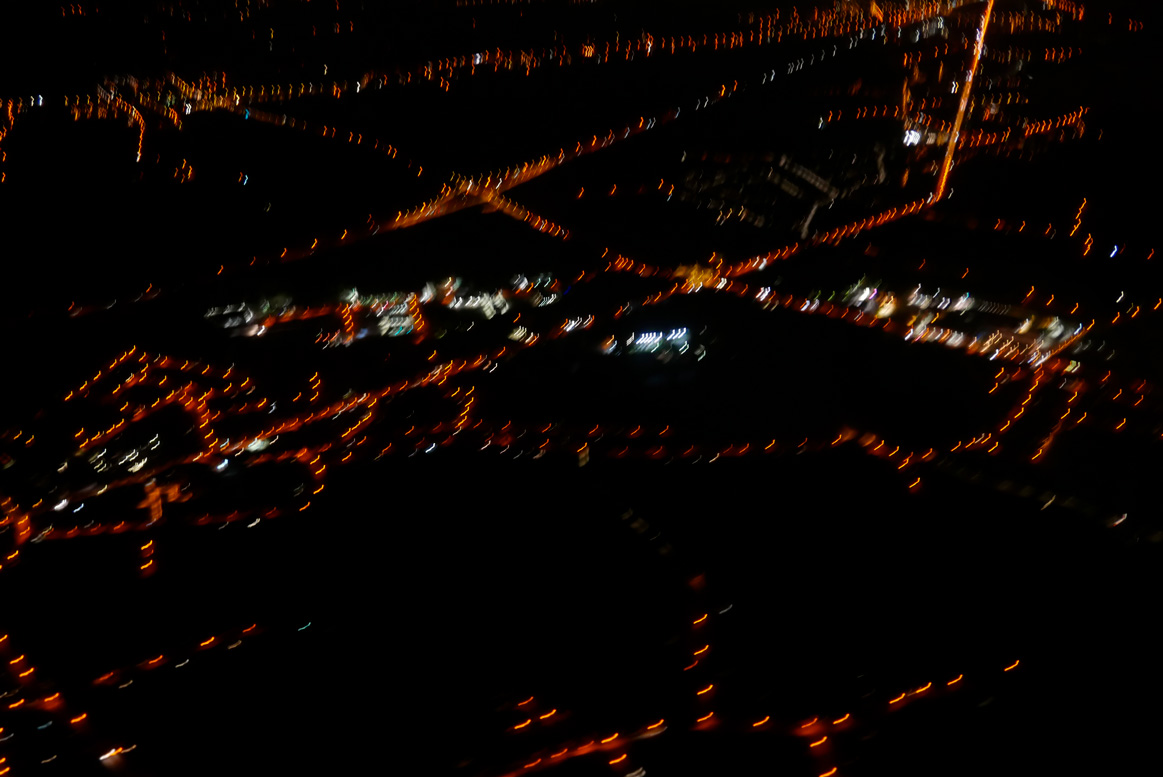
Ciò che copre e protegge, unisce e separa
2018
Installation
cotton fabric, beeswax, cement, woolen thread, nails
450 x 200 x 15 cm
2018
Installation
cotton fabric, beeswax, cement, woolen thread, nails
450 x 200 x 15 cm
In the installation, the "city" is translated and interpreted in a fluid labyrinth, an archipelago where islands emerge that attempt a connection, one with the other, to define a single and interacting whole: the built agglomeration arises, according to a reading another, as a multicellular organism and not as a single complete and static entity. In its overall disharmony there are all the hints to highlight the dynamic flow of life that winds beneath, inside and between its structures and makes the city live and animate with the different beauty of its varied vital presences.
The work-installation is composed of dynamic and multi-faceted forms that synthesize a certain idea of dynamism and are composed of special materials of strong symbolic value: sheets, wax, cement and wires are a metaphor for protection, industriousness, construction, solidity and bonds (narrow, tight or loose), principles that characterize human social living stretched between its essence of artifice and its ambivalent natural conformation.
The archetype used by Costanzo - also drawing inspiration from the models hypothesized by the economist and geographer Walter Christaller - highlights the possibility of stable coexistence networks, of empathic symbiosis between individuals that in a place, generated by successive aggregations over time, sediment and they encompass a different community in a place that knows how to become common by calling itself "city". A place that, even if perceived differently, always belongs to everyone, as long as with its own existence, despite being protected on its own island, everyone is willing to live there with his own soul and his own conscience, even before his own body.
Nell’installazione la "città" si traduce e interpreta in un labirinto fluido, un arcipelago dove affiorano isole che tentano una connessione, le une con le altre, a definire un insieme unico e interagente: l'agglomerato costruito si pone, secondo una lettura altra, come un organismo pluricellulare e non come un'unica entità compiuta e statica. Nella sua disarmonia complessiva ci sono tutti gli spunti per mettere in luce il dinamico flusso vitale che serpeggia sotto, dentro e tra le sue strutture e fanno vivere e animare la città con la bellezza diversa delle sue variegate presenze vitali.
L'opera-installazione si compone di forme dinamiche e poliedriche che sintetizzano proprio una certa idea di dinamicità e si compongono di materiali speciali di forte valore simbolico: lenzuola, cera, cemento e fili sono metafora di protezione, operosità, costruzione, solidità e legami (stretti, da stringere oppure sciolti), principi che connotano l'abitare sociale umano teso tra la sua essenza di artificio e la sua ambivalente conformazione naturale.
L'archetipo cui ricorre Costanzo - anche traendo dichiarata ispirazione dai modelli ipotizzati dall'economista e geografo Walter Christaller - evidenzia le possibilità di stabile reti di coesistenza, di simbiosi empatica tra individui che in un luogo, generato per aggregazioni successive nel tempo, sedimentano e inglobano una collettività diversa in un luogo che sa diventare comune chiamandosi "città". Un luogo che, per quanto diversamente percepito, appartiene sempre a tutti, purché con la propria esistenza, nonostante resti protetto nella propria isola, ognuno sia disposto ad abitarvi con la propria anima e la propria coscienza, prima ancora che con il proprio corpo.
testo Matteo Galbiati




